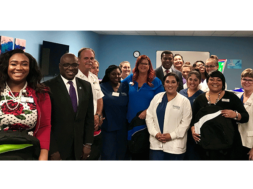
Career Colleges – Entering a 21st Century Where Industry Certifications and Employment Relevance are Essential
By Gary Carlson, President, gCarlson Inc. and Raul Valdes Pages, CEO, Quantum Educational Services
Summary
Over the last 15 years, the career school sector has been dislocated by several internal and external factors. One of the most salient internal actions was the matriculation to regional accreditation, which has no outcome standards for competencies, for higher level programs at Bachelor and Master’s level. Some career schools focused more on the degree level expansion than the skill level development in a trade or vocation. From 1999 to 2010 publicly traded schools increased from 15 percent to 66 percent being private equity or publicly traded. By the pressures of serving more than one vested customer, decisions were influenced by monetary reasons, i.e., profit expansion at all costs. Decisions on program offerings were now less influenced by employers. Senator Harkin instituted oversite hearings for the gainful employment proposed regulations to examine the career school mission for providing skilled workers with integrity and accountability. Some passed, some failed. Unfortunately, the good was tarnished with the bad. This provided for a period in time of attack journalism and misinformation to the public regarding the value of ALL career schools in America.
Our career school student body used to be focused on programs in electronics, Computer Aided Drafting, computer training, medical assisting, and many more skilled workforce positions.
Job placements were readably available with an education that was offered at a reasonable price. During the 1980s, most schools would not have had issues or challenges with gainful employment. Some schools lost their way, and the failings of publicly traded schools gave way to the misfortune of many private career schools. Publicly traded schools became a slippery slope to climb for creditability, accountability, and integrity. Private equity followed the same path with programs and no jobs and staffing cuts in student services and placement – part of the reason career schools were so successful.
Additionally, the sector over-expanded due to consolidation by private equity and the recession. In 1999, the sector had made $4 billion in revenues. By 2010, it had grown to $35 billion, a 21.8 percent annual growth rate. Unfortunately, innovation played no part in growth. Medical Assisting programs overgrew and jobs that did not lead to employment such as criminal justice proliferated.
There is no question there is a supply and demand issue that needs to be answered through education for the skilled professions. Accreditation has neither the staff or expertise to provide a comprehensive evaluation of what our governmental institutions are demanding. Attention to quality standards and process standards on education look to focus on the minimum standards of quality. Employers provide for schools the best perspective; the added value of dealing with a specific college is knowing all graduates meet the qualifications they require. In health care certifications are common. In information technology, they have not been. Employers take risks hiring employees and if they terminate them for lack of skills, not only have they wasted money in their orientation process, they now risk potential Equal Employment Opportunity Commission, and American Disability claims. Consistent quality is key to a college-employer relationship. Currently, schools and colleges are often falling short of the needs of employers. According to the Bureau of Labor Statistics, out of the roughly 7 million open jobs in the United States of America half require education not currently offered by our colleges.
Re-engineering our schools and offerings will need to include automation, robotics, Internet of Things, cybersecurity, dialysis techs, health information technology, clinical lab techs, health information management, and others.
The next step will be to education for jobs that have not even been identified yet.
Experience shows a definite manifestation of schools and colleges recognizing skill standards established by professional organizations such as “The National Manufacturing Association, Center for Education and Economy, American Electronics Association and other related skilled professions. To achieve this linkage, there needs to be two-way communication between education providers and employers. The school standards of a college need to be focused on entry-level skill standards for employment. The academic format will need to include soft skill achievement by student graduates. The curriculum should include communications, problem-solving, and teamwork. Employers in the past have expressed this need due to their experience with graduates who do not have the soft skills.
The litany of challenges described represents an opportunity for career schools and colleges to meet the current and future needs of our communities. Create a partnership with employer needs that are parallel to a graduate’s education, by demonstrating quality through the exact certifications used by employers and reasonably priced programs that comply with gainful employment.
New programs, gainful employment compliant, industry accepted certifications
As we all know, the job market needs are changing. Nascent or emerging technologies are forecast to eliminate 40 percent of their current jobs. The good news is that these technologies will create areas of new jobs. The new jobs will need a new education format.
Here are five examples of new technologies providing new jobs with attention to new skills (these are actual innovations entering the market now):
- Robotics drawing blood with infrared technologies to locate best veins. Requires the re-training of phlebotomists. Operating equipment rather than probing for veins and inserting needles. A video demonstration can be watched on the following site: https://youtu.be/s30FPobi9iA.
- Household and business air vents communicating with each other wirelessly as thermostats adjust for temperatures. The following site discusses “smart vent” technology: https://medium.com/@AleaLabs/8-reasons-why-smart-vents-2-0-are-safer-to-hvac-systems-than-manually-adjustable-dumb-vents-d5543ce9477.
- Watson, the IBM supercomputer will diagnose treatments for patients using available data and determine appropriate actions.
- A new revolutionary change for TV’s and computers began with the innovation of 5G downloading data and content at 10X the speed of 4G.
- Australia is using robots for open heart surgery and prostate surgery. A video demonstration can be watched on the following site: https://www.zdnet.com/video/share/australian-researchers-use-robots-for-successful-prostate-surgery/?mobile=true#ftag=CAD-00-10aag7e.
All the above manifest the marriage between machines health care, heating, ventilation and air conditioning, medicine and surgery, Internet of Things (connected home) and computers.
According to Forbes, the following industries are soon to be revolutionized:
- Cybersecurity – Countless permutations in which adversary can penetrate. Complex reasoning of AI helps improve defenses. Computers are able to hold more information and use variables that humans cannot.
- DevOps and cloud hosting – Elastic computing cloud enabled by AI.
- Manufacturing – Limitless potential. From preventive maintenance to the automation of human tasks.
- Healthcare – Computer vision against X-rays. Drug safety. Health data. X-rays will be better at detection, health and drug data will require more and secure hosting, computers will be better at assessing drug interactions.
- Construction – AI and machine learning makes the process faster, safer and more cost effective.
- Senior care – With aging baby boomers we need solutions that provide continued efficiency.
- Retail – Retail will use AI and virtual reality in advertising to develop “trial” of products in enhanced reality.
- Business intelligence – Enterprises are overwhelmed by data. AI will explore data and improve decision making.
- City planning – AI will help develop patterns in urban areas that will help planning.
- Education – Has not changed much in centuries. AI will help develop personalized and dynamic learning paths for students.
According to Credence Research, the presence of robots in health care is already valued at $7.24 billion. This is no longer in the future, it is now. Areas include:
- Telepresence – Physicians use them to examine and treat patients remotely.
- Rehabilitation robots – They play a role in treating people with disabilities or injuries.
- Medical transportation – Supplies, medications, and meals are delivered to patients by robots.
- Surgical assistant robots – Help surgeons with minimally invasive procedures.
- Robotic prescription dispensing systems – Robots are fast and accurate, two features important in pharmacies.
Our point is the world is changing, and our job will be to train students for new jobs. The lines between health care schools, IT schools and business will become intertwined in the future.
The solution we propose
Short certificate, diploma and in some cases, Associate degree programs matching employer certifications, soft skills. The ability to comply with regulations established by gainful employment. You could envision 1+1+2 programs as students take a discovery line of education. In other words, students could finish a one-year diploma, opt for another year which creates an Associate degree and then choose two more years for a Bachelor degree. Graduation will be enhanced, and students will have more options.
The following are some example programs:
- Automation
- Robotics
- Internet of Things
- Cybersecurity
- AI
- Network Engineers
- Project Managers
- HIT
- HIM
- OSHA specialists
- Dietician
- Exercise Physiologists
Programs like these not only would help bridge “skills gap” and train half of the 7 million open jobs but would also allow schools to become the training departments for companies looking to update skills of current employees. What are the implications? More students and more “10” money from tuition reimbursement.
Quantum Educational Services has been researching these areas for over a year looking at criteria of employment, cost and affordability. We have found content providers owned by certification companies or affiliated with them. Most content is online and asynchronous, so students can go at their own pace, but an instructor will be with them in the classroom to help, answer questions and motivate. Because delivery is standardized as delivered on a PC, you will not have different instructors teaching different content.
Imagine 21st century programs with industry certifications to validate the quality and offered to students at reasonable prices and all leading to where the skills gaps are at.
For you historians in our sector, if the concept sounds familiar, it should. In the 70s, asides from traditional trades, school chains like DeVry and ITT started developing programs in niches not available by traditional educators. Electronics, CADD, computer repair and programming, were “beneath” traditional higher education and career schools thrived by offering these programs while employers chased our graduates. The programs may have changed, but the concept is still the same; offer programs that employers want, and traditional higher education ignores. And do it at reasonable prices.
So, to conclude, time to let go of the old thinking and start looking both at what your employers need now and in the future. We will always have a role to play in higher education if we fill the niches others do not and offer VALUE. We will have to be better.
If you are interested in learning more about our programs and services, email raul@quantumeducationalservices.com.
GARY CARLSON President for gCarlson Inc., consults colleges across the United States. His sharing of experiences and analysis with schools and colleges has produced improvement and performance for student success, student retention, regulatory compliance and faculty performance. His expertise encompasses the full scope of school leadership, faculty and operations. The schools and colleges he has mentored are believers in the methods used to improve their success.
Dr. Carlson is a professional education expert in analyzing operations of schools. His process techniques are utilized in both small and large schools. By focusing on the detail and his practical experience has provided him with the expertise to understand the challenges schools and colleges face day to day.
Benefits are magnified when there is someone who is no stranger to your school or college mission. His career has existed on a strong foundation of success. Passion and commitment is part of his character. Dr. Carlson’s expertise has put in high demand to serve on committees and board of trustees across the United States. When not present in a school you will find him volunteering in his community fundraising and teaching in nonprofit organizations.
Prior to being President for gCarlson Inc. his professional experience started with: high school teacher and football coach, truant officer, special education teacher, director of special education, president for a children’s home for behavioral troubled youth (Resident and School Students), President for a two-year business college and Chief Academic Officer for a large organization school (127 colleges).
Dr. Carlson’s goal is to implement support and assistance for school leadership through a discovery process to determine the solutions for improvement. Identification of the key variables that exist in school performance and process provides the tools to fine-tune current and future outcomes. The best school process is cyclical, so the reoccurrence of success is predictable.
Dr. Carlson is passionate about success and improvement.
It is always a pleasure to talk with schools and discuss potential improvement in the future. You can contact me: 317 258-3401.
Contact Information: Gary Carlson // President // gCarlson Inc. // 317-258-3401 // gary@quantumeducationalservices.com // www.quantumeducationalservices.com
RAUL VALDES PAGES has been active in adult Education for over 35 years in both for-profit and non- profit colleges. He is known as an innovator and strategist with extensive experience in consumer and education marketing.
Raul was CEO of Sextant Education, Educational Development Corporation and Quantum Educational Services. Prior to that, he was VP of Product Development at DeVry, Director of Marketing at DeVry, Project Manager at Olin Consumer Products and Director of Community Relations at OIC. EDC was sold to DeVry in 1999. Raul launched Quantum Educational Services in 2002.
Raul was a Commissioner at ACCSC, appointed by Governor and legislature to various Education committees including LINKS (k-12 and Higher Ed) SPREE and others. In 1998, Raul received a “Best Education” award from CCA. He also received 19 best ideas awards from CCA. Raul sold his Colleges to DeVry in 1999. Colleges were all employer competency based. Schools hit 52 percent 90-10 and 8 percent default rate.
Because of his decades-long experience in developing employer competencies, Raul was asked by the Department of Labor to testify on behalf of Clinton’s Skill Standards Bill in 1999 along with NAM, Center for Education and the Economy and American Electronics Association and others.
Raul has worked with Accreditation at HLC, Southern ACCSC, ABHES, ACOTE, APTA, BON and others.
Raul is a graduate of Rockford University with MBA work at Keller. He is a trained Synectics trainer which specializes in creative problem-solving. (Cambridge, MA)
Raul is passionate about education and maintaining INTEGRITY and INNOVATION in our sector.
He has served in various business and Boards such as Colorado Youth at Risk and Opportunities Industrialization Centers.
Contact Information: Raul Valdes Pages // CEO // Quantum Educational Services // 303-475-2613 // valdespages@icloud.com // www.quantumeducationalservices.com












